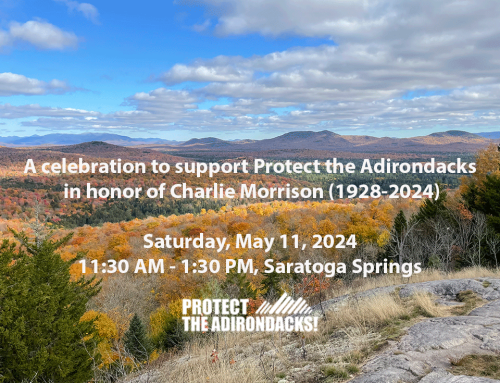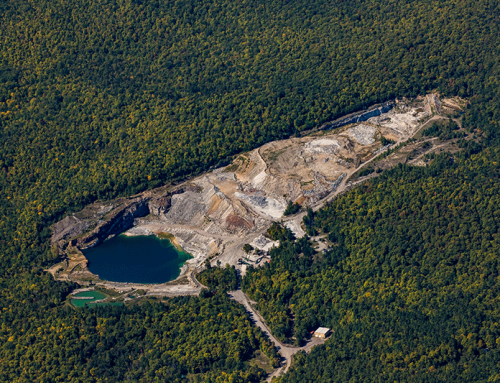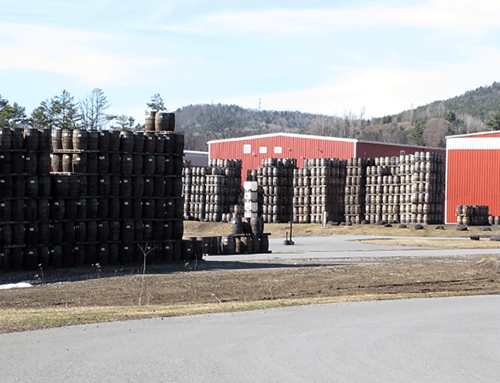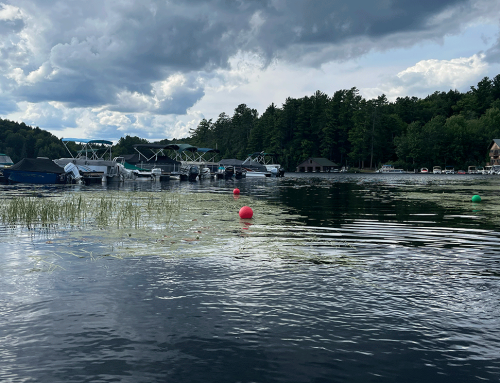On May 16, 2013, the Appellate Division, Third Department, issued two Decisions and Orders in the lawsuit by Protect the Adirondacks and the Sierra Club Atlantic Chapter that challenges the approval by the Adirondack Park Agency (APA) of the 6,000-acre Adirondack Club & Resort project. Both decisions were victories for PROTECT and the Sierra Club. First, the court ruled to allow an appeal to go forward by PROTECT- Sierra Club, who seek a reversal of the denial of their earlier motion for discovery. Second, the court denied a motion by the Adirondack Club & Resort’s attorneys to curtail PROTECT-Sierra Club’s time to complete the filing of their brief and the record.
PROTECT and the Sierra Club’s appeal of the denial of discovery was consolidated with the main case into a single proceeding. PROTECT and the Sierra Club anticipate that the court case will be completed by around the end of 2013.
In March, State Supreme Court in Albany denied the PROTECT-Sierra Club motion for discovery to investigate allegations of illegal ex parte communications between the leaders of the APA, the ACR developers, and other state officials. In April, the lawsuit was transferred from the trial court back to the Appellate Division. PROTECT and the Sierra Club made a motion seeking permission from the Appellate Division to appeal the denial of their motion for discovery. At this same time, the developers made a motion to curtail PROTECT- Sierra Club’s time to complete the filing of their brief and the record in the main case. On May 16, 2013 the court ruled for PROTECT and Sierra Club on both matters.
See decisions and orders here.
“These two victories are important. We believe that there were significant improper ex parte communications between the leaders of the APA, the ACR developers, and other state officials. It’s critical to this lawsuit, and to protecting the integrity of the APA’s decision-making process, that we be given the opportunity to further investigate this matter,” said John Caffry, attorney for PROTECT and the Sierra Club.
“It’s important for the public that we be given the opportunity to investigate the ex parte issue. So far state agencies have stonewalled attempts to get information and withheld a variety of documents,” said Roger Downs, Director or the Sierra Club Atlantic Chapter. John Caffry added that “the State has never denied that communications outside of the official hearing record occurred between Albany and the APA. It has so far avoided releasing the documents that we seek only by claiming that they are privileged.”
“PROTECT remains confident in the overall quality of this lawsuit. The denial of our discovery motion in March was a setback, as was the APA’s partial denial of our FOIL requests last summer. We will continue to pursue these items as the main suit moves towards conclusion. We anticipate final briefs and oral argument by the fall, with a decision likely around the end of the year,” said Peter Bauer, PROTECT Executive Director.
Here is a timeline of major developments in this lawsuit pertaining to these two motions:
July 2012: PROTECT-Sierra Club received responses to their Freedom of Information Law (FOIL) requests that show extensive communications between APA leadership and the project applicant. APA also denied other PROTECT-Sierra Club Freedom of Information requests. PROTECT formally appealed these denials. PROTECT-Sierra Club’s appeal of the FOIL denials was mostly rejected by the APA. Some heavily redacted information was provided. The existence of extensive correspondence between individuals in state government outside the APA and APA leaders was identified, but those documents were withheld by APA.
In the lawsuit, the respondents filed their Amended Answers and PROTECT-Sierra Club filed its Reply documents, which detailed the ex parte contact allegations, one of 30 allegations in PROTECT-Sierra Club’s lawsuit.
August 2012: By agreement of the parties, the case was transferred from a trial court to the Appellate Division, Third Department, in Albany, which was required because the APA’s decision was the result of an adjudicatory hearing.
September 2012: PROTECT-Sierra Club submitted a motion for discovery around the ex parte contact allegations, seeking permission to depose various witnesses. PROTECT-Sierra Club submitted a Memorandum of Law in support of the motion for discovery.
October 2012: The respondents submitted answers to PROTECT-Sierra Club’s motion for discovery.
November 2012: The Appellate Division sent the lawsuit and PROTECT-Sierra Club’s motion for discovery back to the trial court.
PROTECT filed a new lawsuit challenging the denials of its FOIL requests in State Supreme Court in Warren County.
December 2012: PROTECT-Sierra Club re-filed their motion for discovery in the trial court.
January 2013: The respondents submitted Answers opposing PROTECT-Sierra Club’s motion, and PROTECT-Sierra Club submitted a Reply. The respondents denied that improper contacts occurred between the APA and the developers, but did not deny that improper political influence occurred.
March 2013: State Supreme Court in Albany denied PROTECT-Sierra Club’s motion for discovery.
April 2013: The lawsuit was transferred from the trial court back to the Appellate Division.
PROTECT-Sierra Club made a motion seeking permission from the Appellate Division to appeal the denial of their motion for discovery. The developers made a motion to curtail PROTECT-Sierra Club’s time to complete the filing of its brief and the record.
MAY 2013: PROTECT-Sierra Club won both motions – leave to appeal on the request for discovery was granted, and the developer’s motion to curtail PROTECT’s time was denied. The appeal was consolidated with the main case into a single proceeding.





